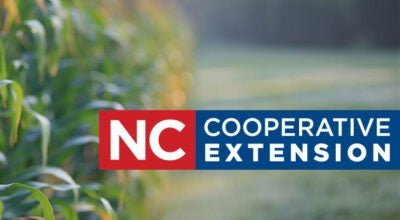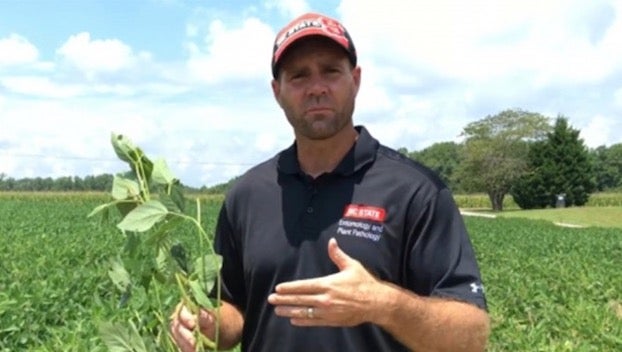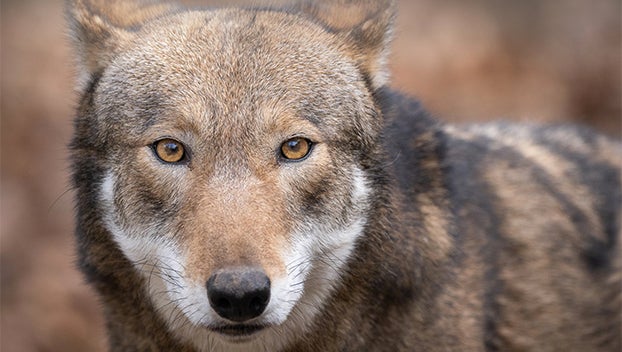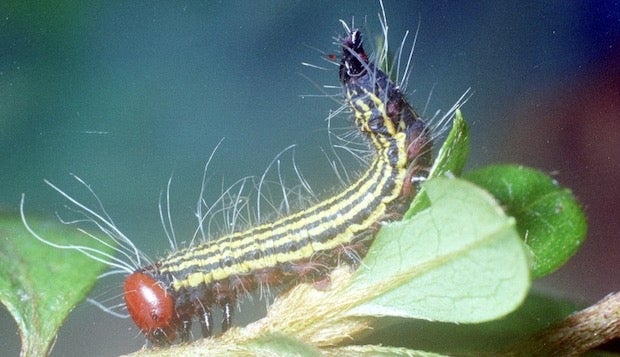Dishing the dirt-I’ve been robbed!
Published 5:38 pm Thursday, June 30, 2022
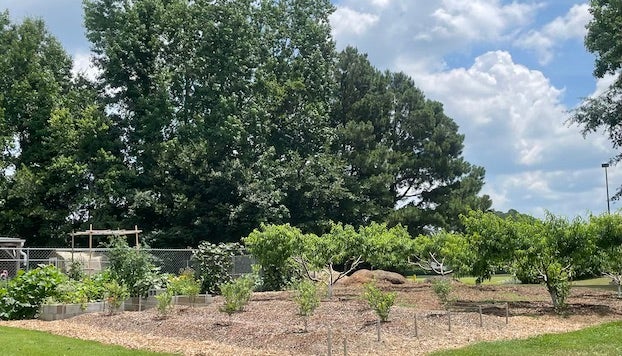
- Newly added blueberries and raised beds accompany the peach trees in the Master Gardener Teaching Garden at the Beaufort County Extension Center. (Gene Fox)
|
Getting your Trinity Audio player ready...
|
One of the things in horticulture that interests me the most is fruit production. I grew up around several orchards in Western Maryland that had apples and peaches galore. I remember riding through the orchard on my bike and always playing in the orchards as a kid. One town would have a peach festival to celebrate the harvest in mid-August or so every year. They would also have the Steam & Craft Show around the apple harvest every year. I looked forward to both and I dreaded them at the same time because I knew we would be canning peaches and apples after those festivals! I can honestly say that I miss those days now.
I began the adventure of growing a couple of peach trees at my office in the Master Gardener Teaching Garden a few years ago. Along with the help of a few key master gardeners, we have had a really good experience in growing and training the trees. I have been able to show “Hands-on” how to train and prune the trees to master gardeners and clients alike from growing the trees.
It is not easy to take care of peach trees or any fruit trees for that matter. In fact, it is a lot of work to grow these trees. First is the site selection, they have got to have plenty of light or there isn’t any fruit. Second is planting, all fruit trees come grafted and so you need to make sure the graft union is a minimum of 2 inches above the soil level (this means don’t plant too deeply). The hole should be 2 ½ times as wide as the root ball of the tree with the soil loosened around the edges. Then comes the watering regime, these trees need plenty of water their first season but not too much at one time! Now we are finally to the training and pruning part. Peaches need to be trained to an open center so that sunlight can get to all of the branches. The fruit is borne along the branches on peaches, not at the terminal ends such as apples and pears. Apples and pears are trained to a central leader system such as a Christmas tree. But, the first three years, we really do not want to produce any fruit. The idea is to grow four strong scaffold branches reaching out in each of the four cardinal directions. This will prepare the tree for bearing large quantities of heavy peaches without breaking under the weight.
Next comes fertilization, the trees need to be fertilized every year in March to aid in growth of the tree. Weed control is another important factor in growing fruit trees. NC State University has done some work that shows an area eight foot in diameter should be kept vegetation free around the trees. Turf is incredibly competitive with trees for resources like water and nutrients. The studies show that where the turf starts is typically where the tree’s roots stop. Next is protection from freeze damage. Painting the bottom 18-24 inches of the tree with white latex paint actually protects the tree from damaging cold in the winter and early spring. This serves to protect the young trees from herbicide applications as well. However, if you are looking to be organic certified, this will make you lose your certification! Lastly, there are pest and diseases that we need to protect against. Many of the diseases that affect our peaches start really early in the season but don’t affect the fruit until near harvest. We need to make sure to spray the trees roughly every 10-14 days to protect against the pathogens beginning early in the year. Many of the pests that we see can hurt all along the season as well. So, it is important to stay on top of timely spray applications for those as well.
Now, if you do all of this correctly you should have great harvests beginning the fourth season! Oh, but wait, that depends on whether you make it through the spring without a frost! This is our fourth season and I was so looking forward to having a bountiful harvest this year. However, we caught the last frost and it took out about 2/3 of our fruit. Not a big deal though, it is best for the trees to produce only 12%-15% of the fruit it can produce. The rest of the fruit should be pruned off after flowering. So we were in good shape, well that is up until last week. Our peaches were coming along nicely and since there weren’t that many on the tree, they were getting nice and big. I could almost feel the juice from those ripe plump peaches running down my chin. I was away last week so when I got here Tuesday of this week, I inspected the garden and the trees. I found that we didn’t have a single peach left on the trees! We had been robbed!
Our peaches were gone without a trace. There wasn’t a single scrap on the ground and not a single peach on the trees left. If this happens to you, it is typically opossums or raccoons that are to blame. The only way to truly know though is to set up a wildlife camera. Growing fruit isn’t all peaches and cream! I really feel for all of those orchards folks, if I only have four trees and have trouble making a crop, imagine what they are going through!
If you have horticulture a question or would like a tour of the teaching garden, call the Extension Master Gardener Volunteers in Beaufort County or Gene Fox, the Area Consumer Horticulture agent at (252)946-0111 or please email Gene at gene_fox@ncsu.edu. Our Extension Master GardenerSM Volunteers in Beaufort County offer their Greenline service on Mondays and Wednesday from 10:00 – 12:00. Give us a call and let us help you GROW!


